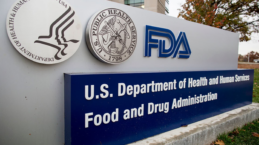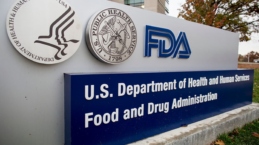

insights
Building a Productive Relationship with the FDA: Beyond the Science
Building a Productive Relationship with the FDA’ was originally published by Pharmaceutical Online. Click here to read the original article. Halloran Principal Consultant, Michelle Rose, also contributed to this article.
Whether your relationship with the FDA starts with pre-IND feedback (see Part 1 of this three-part series) or simply with an IND submission (see Part 2) itself, these early interactions will likely form the basis for a long (and hopefully happy) marriage. After all, this liaison could very well last beyond submission and initial approval of a marketing application to including additional trials relevant to the drug’s development and labeling. As there is no manual available for building an effective and collegial relationship with the FDA, this article offers helpful tips to assist sponsors in establishing and maintaining this critical union.
At the end of the day (or several years), sponsors and the FDA ideally work collaboratively during the drug development process, having a shared public health goal of making safe, effective, and high-quality drugs available to the American public as quickly as possible.
Start Off On The Right Foot
Here are some best practices to keep in mind (and mention to your team) as you begin those engagements with the agency:
- Know the applicable regulations, guidances, and other available tools so that you are well-informed of the FDA’s requirements and expectations from the get-go. Tap into internal or external regulatory resources to help you navigate and interpret these documents.
- Keep your communication clear and concise; avoid data dumps. I can’t stress enough how important it is to consider key messages when telling your story to the FDA. Take them along with you so that they understand the thought process.
- Be organized and always consider the FDA reviewers — don’t make them work hard to find things.
- Be timely with responses to requests for information. Try to avoid committing to timelines that you can’t meet. At the same time, do everything possible to produce a quality response by the requested deadline.
- Don’t ignore FDA feedback. You’ve taken the time and energy to seek this very valuable feedback; don’t cast it aside as a box-checking exercise.
- Ensure your subject matter experts (SMEs) are prepared for interactions with the FDA. Try to anticipate likely FDA feedback and rehearse the position you intend to take in response to that feedback. Contingency planning and response rehearsal enable you to be nimble should FDA disagree with the initial proposal. It’s also helpful to stage mock panel sessions prior to FDA interactions (especially those that are face-to-face.) This forces the SMEs to practice responding under pressure. Ask senior individuals within your company who are not directly involved with the project to play FDA panel members. This subjective view can often uncover potential questions and issues that the team has not yet considered but needs to be prepared to speak to.
- Be consistent with your strategy, but also be open to flexibility (within reason). The key to this point is the importance of time, cost, and feasibility. It is a balance, and there are certainly tradeoffs to be considered.
- Be open and honest — doing so is likely to save you time in the long run. It is critical to ensure that issues of concern and discussion points are clearly understood and agreed upon by both you and the FDA. Successful relationships with the FDA can be attributed to both parties having a clear, well-defined understanding of requirements, issues, and steps to resolve any disagreement that may arise.
- Approach the FDA with a positive mindset, and view the agency as a partner, rather than a roadblock. It is critical to abandon any notion that the relationship must be confrontational, controversial, or competitive (as in “us” versus “them”) and accept the concept that both parties can win.
- Keep the conversation with the FDA going. Communicate with the agency on a regular basis. Simply sitting back and waiting to hear from the FDA is not an effective way to foster a good relationship. While a daily check-in is not necessary, it is important to make yourself and your company known to the reviewers in order to foster a successful relationship.
- Establish multiple lines of communication with the FDA. This starts at the regulatory project manager (RPM) and reviewer level but then expands to include engaging in broader discussions at the senior executive level. Attend and participate in forums such as public workshops and professional conferences where the FDA is presenting to stay abreast of the agency’s current thinking. In doing so, you will likely find that FDA leadership is more than willing to engage in discussions to gain a better perspective on companies and their products as well as to obtain input in the policy arena. Believe it or not, sponsors can actually help to influence the FDA’s thinking in a positive way.
Keeping the above in mind, you’ll be on track to establishing and maintaining a positive, mutually respectful relationship with the FDA.
Know The Roles And Rules
In December 2015, the FDA released draft guidance called Best Practices for Communication Between IND Sponsors and FDA During Drug Development. This document sheds some light on the FDA’s philosophy regarding communication with sponsors, as it is so critical to a strong relationship.
First, the FDA defines the roles and responsibilities of both the sponsor and the agency:
- Sponsors’ primary responsibilities are managing the overall development of their drug (i.e., supporting well-designed and well-conducted nonclinical and clinical trials for approval while ensuring patient safety), determining the nature and timing of regulatory submissions to the IND, soliciting input and guidance from the FDA during the course of their development program, and providing well-organized and complete IND submissions (including amendments and supplementary information) to the FDA for review.
- The FDA’s primary responsibilities with respect to INDs are, during all phases of an investigation, ensuring the safety and rights of subjects, and, during Phase 2 and Phase 3, helping to ensure that the quality of the scientific evaluation of drugs is adequate to assess the drug’s effectiveness and safety. The FDA also has the important responsibility of enforcing requirements related to good clinical practice (GCP) and human subject protections. The FDA reviews IND submissions and takes regulatory actions (e.g., clinical hold) as appropriate. FDA review staff also play an active role during drug development by providing advice and feedback to sponsors on specific trials and overall development programs based on their review of IND submissions and meetings conducted between sponsors and the FDA. Finally, the FDA promotes the advancement of regulatory science by authoring FDA and international guidances, conducting and participating in public workshops and public/private consortia, collaborating with academia, publishing in medical and trade journals, and presenting scientific and regulatory topics at professional conferences.
The draft guidance states that the FDA believes that scientific and regulatory recommendations provided during drug development meetings with sponsors may result in more efficient and robust development programs. This philosophy is articulated in 21 CFR 312.47, 21 CFR 312.82, FDA’s meetings guidances, CDER’s Manuals of Policies and Procedures (MAPPs), and CBER’s Standard Operating Policy and Procedures (SOPPs). Sponsors can request meetings with the FDA at any time during drug development, and the FDA strongly encourages sponsors to request critical milestone meetings. The information you can obtain from these types of meetings can truly shape your entire development program, even shaving off some time if it is agreed that certain studies might not be necessary. Further, these periodic engagements with the FDA aid in fostering a relationship that sponsors continue to build upon as development progresses.
Here’s one final thought to ponder: Behind every successful marketing application is an effective relationship involving many representatives from the pharmaceutical industry as well as the FDA. While the fate of the application is undoubtedly tethered to the science behind it, how effectively the application winds its way through the regulatory labyrinth is hugely linked to the working relationship that exists between the sponsor and the FDA. Ineffective communication and a poorly fostered relationship can ultimately delay approval and can translate into millions in lost sales.




